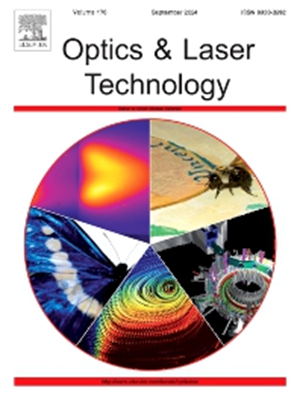Lossy mode resonance optical sensors on-chip and on-fiber
IF 4.6
2区 物理与天体物理
Q1 OPTICS
引用次数: 0
Abstract
Lossy Mode Resonance Optical Sensors (LMROS) have attracted significant research interest due to their superior in material selection and sensing performance compared to Surface Plasmon Resonance (SPR) senors. This review provides the large map of LMROS configuration, focusing on the supporting platform on prism, optical fiber, and on chip. The discussion includes a concise introduction to the basic principles, and the configuration types following with various coupling techniques, concerning depositing techniques, tapering techniques in different circumstance. Firstly the prismatic configuration mainly in Kretschmann configuration is discussed with two layer structure and three layer structure on the prism surface. Then fiber based configuration is discussed from the cladding removed fiber, tapered fiber and cladding etched fiber, side polished fiber, fiber with grating structures, fiber tip structures, to novel fibers such as photonic crystal fiber, coreless fiber, and double cladding fiber configuration. And then the on-chip configurations are discussed with the chip as the center, which is coupled through fibers on its end-face and lateral-face, or though other coupling technique on the integrated optical waveguide, or photonic integrated circuits. Some inconsistent concepts are discussed, and critically some of conventional optical waveguide structures are discussed from the point of Lossy Mode Resonance (LMR) phenomenon, considering the applied materials, and sensing performance. Finally, the advantages and possible future trend of each configuration are discussed.
求助全文
约1分钟内获得全文
求助全文
来源期刊
CiteScore
8.50
自引率
10.00%
发文量
1060
审稿时长
3.4 months
期刊介绍:
Optics & Laser Technology aims to provide a vehicle for the publication of a broad range of high quality research and review papers in those fields of scientific and engineering research appertaining to the development and application of the technology of optics and lasers. Papers describing original work in these areas are submitted to rigorous refereeing prior to acceptance for publication.
The scope of Optics & Laser Technology encompasses, but is not restricted to, the following areas:
•development in all types of lasers
•developments in optoelectronic devices and photonics
•developments in new photonics and optical concepts
•developments in conventional optics, optical instruments and components
•techniques of optical metrology, including interferometry and optical fibre sensors
•LIDAR and other non-contact optical measurement techniques, including optical methods in heat and fluid flow
•applications of lasers to materials processing, optical NDT display (including holography) and optical communication
•research and development in the field of laser safety including studies of hazards resulting from the applications of lasers (laser safety, hazards of laser fume)
•developments in optical computing and optical information processing
•developments in new optical materials
•developments in new optical characterization methods and techniques
•developments in quantum optics
•developments in light assisted micro and nanofabrication methods and techniques
•developments in nanophotonics and biophotonics
•developments in imaging processing and systems

 求助内容:
求助内容: 应助结果提醒方式:
应助结果提醒方式:


